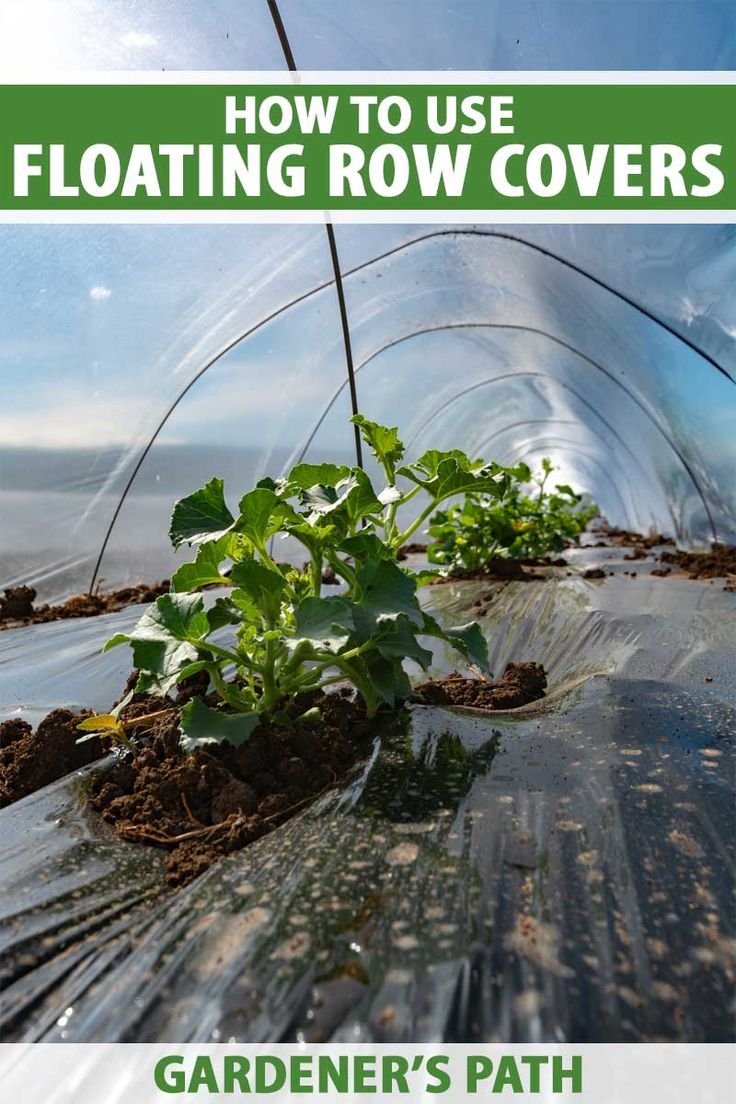
Floating row covers are lightweight fabrics that you lay over your crops. They not only create a protective barrier against pests like hornworms but also can help maintain warmth and moisture. It’s like putting on a comfy sweater when the weather turns chilly—you stay warm, and your plants get the cozy care they need to thrive. Let’s dive into how these covers work, their benefits, and how you can use them to fend off those ravenous pests effectively.
What Are Floating Row Covers?
Floating row covers are made from lightweight materials like spun poly or woven fabrics. These covers are typically placed directly on top of your plants or supported by hoops to create a mini greenhouse effect. You might be wondering, why float? Well, this design allows the fabric to rest gently on the plants without crushing them, providing protection while still allowing for growth.
They come in various thicknesses, so you can choose based on your specific needs. Thinner covers offer protection from insects and light frost, while thicker options can trap more heat, making them perfect for cooler climates. Picture it like choosing a light jacket for a mild day versus a heavy coat for winter; your choice of cover hinges on the climate and pests you’re facing.
Using floating row covers is a proactive step in pest management. Instead of waiting for the hornworms to appear, you’re setting up a barrier that keeps them out from the start. Think of it as a bouncer at a club—no unwanted guests allowed!
How Do Floating Row Covers Prevent Hornworms?
Hornworms, like many pests, need a clear path to get to your plants. By placing floating row covers over your crops, you effectively “close the door” on them. These covers act as a physical barrier; hornworms can’t drop down from above or sneak in from the sides when your plants are protected.
Moreover, the fabric’s design allows sunlight, air, and moisture to penetrate so your plants can still photosynthesize and grow without restrictions. It’s like having a screen door that lets fresh air in but keeps the bugs out. As a bonus, these covers can also shield your plants from harsh weather conditions like hail or heavy rain, providing an all-around safety net.
You might be thinking, “What about beneficial insects?” Great question! While floating row covers do keep out pests like hornworms, they can also limit access for beneficial bugs like pollinators. The trick is to remove the covers during blooming periods to let in those helpful creatures while putting them back on afterward. Timing is everything when it comes to plant care.
Choosing the Right Floating Row Cover
When it comes to selecting a floating row cover, there are a few key factors to consider. First off, think about the size of your garden. Covers come in various lengths and widths, so measure your beds beforehand to ensure a snug fit. If you have a larger garden, you might want to opt for a roll of fabric and cut it to size.
Next, consider the fabric weight. Lightweight covers (around 0.5 ounces) are fantastic for keeping out insects while allowing plenty of sunlight in. If you’re in a cooler region, you may want a heavier cover (up to 1.5 ounces). This thickness retains warmth better, which is great for early spring planting.
Lastly, don’t skip on quality. A durable cover will last longer and do a better job of protecting your plants. Look for brands that offer UV resistance to ensure that the material doesn’t degrade quickly in the sun. Investing in a good cover is like buying a sturdy umbrella; it’ll protect you better in the long run.
How to Use Floating Row Covers Effectively
Using floating row covers is straightforward, but there are a few steps to follow to maximize their effectiveness. First, you’ll want to prepare the area by making sure your plants are healthy and appropriately spaced. If your crops are already showing signs of pests, consider handpicking the hornworms before installing the cover.
Next, drape the cover over your plants gently. If you have taller plants, you might need to use hoops made from PVC or metal to create a frame. The goal is to ensure the cover doesn’t touch the leaves, which can cause fungal problems or suffocate your plants. Secure the edges with soil, rocks, or landscape fabric pins to prevent wind from blowing the cover away.
It’s also essential to check your plants regularly. You’ll want to monitor for any signs of pest activity or diseases and ensure your plants are getting enough light. If there’s a heat wave, you might need to lift the cover during the hottest parts of the day to prevent overheating. Think of it as giving your plants a little sunbath while still keeping the hornworms at bay.
Common Mistakes When Using Floating Row Covers
Even with the best intentions, mistakes can happen while using floating row covers. One of the most common issues is leaving the covers on too long. While they’re excellent for preventing hornworm access, you don’t want to trap excess moisture, which can lead to mold or rot. Regular checks are crucial.
Another common mistake is not weighing down the edges properly. If wind gets under the cover, it can blow away, leaving your plants exposed to the elements and pests. Make sure you secure every inch of the perimeter for the best protection.
Lastly, be mindful of temperature. If you’re in a colder region, you might be tempted to leave the covers on too long in the spring. However, your plants need sunlight and airflow. You’ll need to balance protection with growing conditions, which might take some trial and error at first.
Benefits of Using Floating Row Covers
There are several advantages to using floating row covers that go beyond just preventing hornworm access. For starters, they create a microclimate around your plants. This means that temperatures can be a bit warmer, which can help seedlings establish faster, especially early in the season.
Additionally, the covers can help retain moisture in the soil, reducing the need for frequent watering. This is especially helpful in dry climates or during hot seasons when plants can struggle to get enough hydration. Think of it as having a little greenhouse that keeps everything just right.
Floating row covers also promote earlier harvests. Because they allow you to start planting earlier in the spring, you can enjoy fresh produce sooner. It’s like having VIP access to the best veggies in town! Plus, fewer pest issues mean you can garden with a bit more peace of mind.
Using floating row covers is one of the best strategies you can employ to protect your garden from hornworms and other pests. They serve as a gentle shield, allowing your plants to grow strong and healthy while keeping nasty invaders at bay. With a little care and attention, you can create a thriving environment for your vegetables.
As a gardener, embracing techniques like floating row covers is not just about protecting your plants; it’s also about enhancing your overall gardening experience. You get to nurture your plants while learning more about how they thrive. So grab some covers, prepare your beds, and watch your garden flourish without those pesky hornworms ruining your harvest. Happy gardening!

